Growing Fruits in Pots, Containers - Best Trees, Shrubs, Vines, Herbs
Growing fruit in pots and containers is a great option for small areas, balconies and or for people living in apartments with community gardens.
Pot grown fruits are easy to manage, easy to harvest and easy to water and care for and produce good yields. If the pots are in protected areas, or can be moved to sheltered areas in winter, many tropical species can be grown that would die outside.
The soils in pots are often better than that in outside gardens. Fertilizers and nutrients can be optimized.
However, yields of the larger tree and shrub species will always be lower due to pot size restrictions limiting growth. Grafting offers the option of producing many fruit varieties on one rootstock.
Everything from blueberries to persimmons, from citrus to grapes, from plums and pears to strawberries and raspberries can be grown in pots and containers.
Vines are particularly suitable for pots and containers as they have small root balls and they use external structure for support.
This article provides some great tips for growing fruit in pots and containers and advice for which plants do best in pots for the various climates.
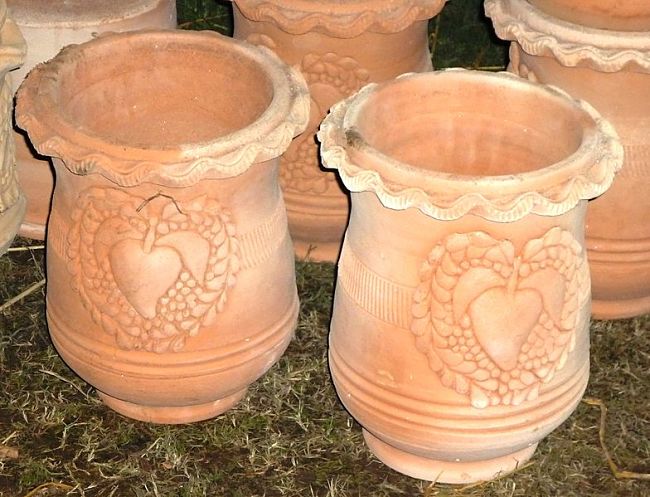
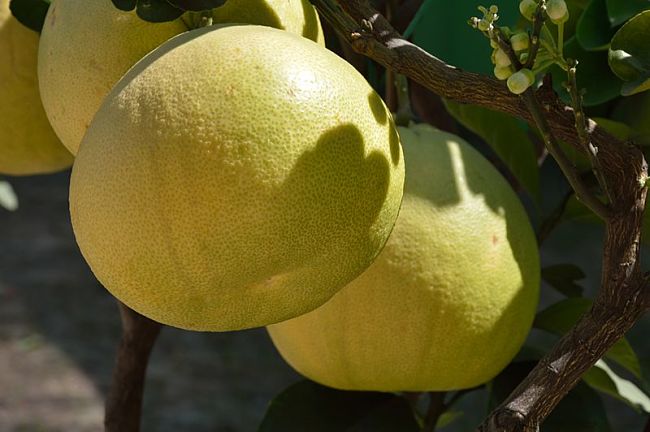
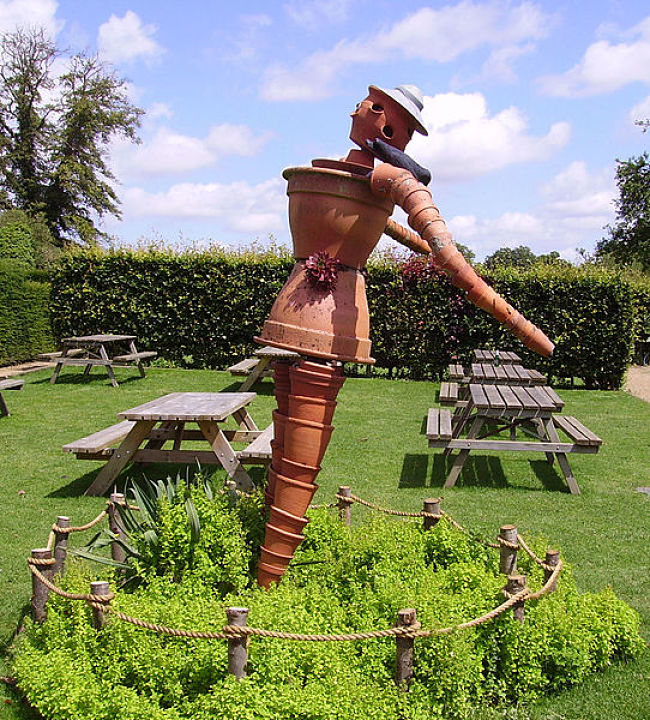
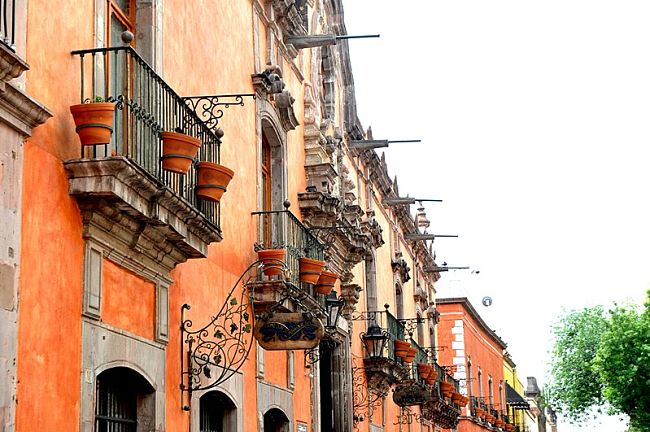
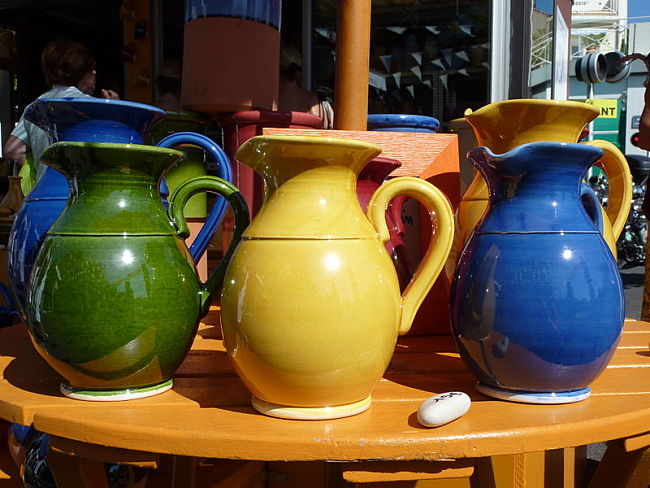
Tips for Growing Fruit in Pots and Containers
If you have a spacious porch or balcony, you can grow an array of herbs, vines and potted fruits, such as citrus, stone fruits and figs in pots.
Many species such as apricots and peaches yield crops earlier and more reliably under cover than outdoors.
Pots can be moved outdoors in the warmer months to get benefits from both worlds - full sun in summer, frost proection in winter.
Most garden soils are unsuitable for pots. Instead. use high quality potting mix and peat layered over drainage material such as broken ceramic pots, gravel or pebbles.
Watering and feeding regimes are different as well, and must be done more regularly, especially for plants that are bearing flowers and fruit.
Water soluble, high-potash fertilizer is recommended for pots.
The other major point is that you should not expect plants grown in pots to last very long. The larger species outgrow the pots and need to be replaced regularly, perhaps very 3-7 years depending on the species.
Nevertheless the extra effort required for growing fruits in pots is well worthwhile.
► Pot size - You can use smaller pots and containers, that require less re-potting if you choose the plants wisely, such as dwarf forms and shrubs tather than trees. The size of pot needed depends on the plant. Larger plants may need to be re-potted or replaced every 3-7 years. Root trimming when re-potting can help.
Strawberries and other small plants can be grown in very small pots or special containers designed for them. Trees and shrubs, initially require pots that are at least 1 foot (30 cm) in diameter and a slightly larger than this, in depth. As the trees and shrubs grow, replant them into larger pots, tubs or other containers.
► Watering - Plants in containers dry out more quickly than those in the ground and need more frequent watering. Automatic systems linked with soil moisture sensors are the ultimate watering system. Over-watering can be just as bad as under-watering.
► Soil types - The environment in pots is very different in garden soils both in terms of drainage and aeration. So don't use pure garden soil for pots. Use good quality potting mix combined with peat moss, compost of other organic matter. Leave enough space on top to add fresh compost each Spring. Adequate space at the top also helps with the watering.
► Choose the type of pots and size that suits the specific plants for pots.Casters on the base make the pots and containers easier to move.
► Fertilizing - The best options are water-soluble types and slow-release fertilizers. Liquid fertilisers are good when the plants are flowering or carrying fruit.
► Yields and Longevity - Naturally yields will be lower for plants grown in pots, despite more frequent watering and 'feeding'. But the rewards are still worthwhile.
► Grafting offers multiple yields from a single root stock. Look out for the grafted varieties offered by nurseries especially for pots.
► Vines are a great option if you have a small 'footprint', but large areas above ground, that the plants can grow onto and over. This includes grapes and many fruiting berries. Trellises and frameworks supported by walls offer good support for fruits in pots
Best Fruits to Grow in Most Areas
Blueberries, Kiwi Fruit. Passion Fruit, Raspberries and other berries: These grow well in pots in temperate areas, especially the dwarf varieties
Peaches and Nectarines: Look for the dwarf varieties. Keep the pots indoors until temperatures reach 50-55 degrees F (10-13 degrees C) until fruit sets, and warmer temperature to ripen the fruit
Apricots: Find campact varieties and train the plant against a sunny wall. Hand pollinate by between flowers to increase yield.
Mulberry: Dwarf varieties are suitable for larger pot. They are generally slow growing and long-lived. They do best in indirect light that is well-ventilated and has ripening temperatures of 55-70 degrees F (13-21 degrees C).
Cape Gooseberries and Ground Cherries are good shrubs to grow in larger pots, in spots with direct sunlight near a window.
Dwarf Pomegranates are suitable for pots but full sunlight and good ventilation are needed.
Figs can be grown in large pots and can so well in semi-shaded positions. Figs need to be well fed when carrying fruit.
Grape Vines provide shade, are very decorative and can produce useful crops even when grown in pots.
Strawberries are perhaps the mostly widely grown fruit planted in pots. There are a huge range of pot designs for strawberries.
Best Fruit Plants for Various Climates
The availability of the listed plants will vary considerably. Check you local nursery for alternatives
► Vines and Fruit Trees for Growing in Pots in Tropical Areas
Ceylon Hill Gooseberry Flower - Abiu Pouteria caimito
Carambola syn. (Five Corner Fruit) Averrhoa carambola
Ceylon Hill Gooseberry Rhodomyrtus tomentosa
Pawpaw Carica spp.
► Vines and Fruit Trees for Growing in Pots in Subtropical Areas
Jaboticaba Myrciaria cauliflora
Acerola syn. Barbados Cherry Malpighia glabra
Custard apple
Grumichama Eugenia brasiliensis
Strawberry Guava syn. Cherry Guava Fruit
Passionfruit Passiflora spp.
Strawberry Guava syn. Cherry Guava Psidium cattleianum
Tamarillo Cyphomandra betacea
► Vines and Fruit Trees for Growing in Pots in Temperate Areas
Apples
Blueberry Vaccinium spp.
Citrus Citrus spp.
Hazelnut Corylus avellana
Kiwifruit Actinidia deliciosa
Peaches and Nectarine Prunus spp.
Plum Prunus spp.
► Vines and Fruit Trees for Growing in Pots in Mediterranean Climates
Fig Ficus carica
Grape Vitis spp.
Mulberry Morus spp.
Pomegranate Punica granatum
Quince Cydonia oblonga
Custard apple
Citrus Citrus spp.